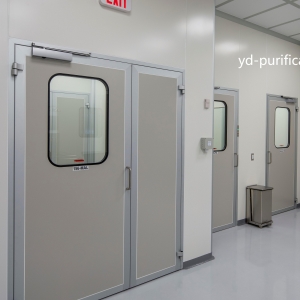Well intervention is a vital process in the oil and gas industry, aimed at maintaining, enhancing, or restoring production from an existing well. Whether addressing mechanical issues, enhancing flow, or plugging the well, well intervention involves various techniques and tools. This article explores the key processes involved in well intervention, the different types of interventions, and their importance in the lifecycle of a well.
Understanding Well Intervention
Well intervention refers to the operations performed on oil or gas wells to optimize production or address technical issues without drilling a new well. These interventions are categorized into two main types:

Light Well Intervention (LWI): Non-intrusive operations performed without removing the well's tubing or other components.
Heavy Well Intervention (HWI): More complex operations requiring significant equipment, such as workover rigs, to access and repair the well.
Key Steps in the Well Intervention Process
Step 1: Planning and Analysis
The process begins with a detailed analysis of the well's condition and production performance. Data from tools like logging and production tests help identify the issue. Based on this, engineers determine the appropriate intervention technique, tools, and safety protocols.
Step 2: Mobilization of Equipment
Once the intervention strategy is decided, the necessary equipment and personnel are mobilized to the well site. This can include coiled tubing units, wireline tools, or snubbing units, depending on the type of intervention.
Step 3: Well Preparation
Before intervention, the well is secured to ensure safety. This involves:
Wellhead Inspection: Verifying the integrity of the wellhead and surface equipment.
Pressure Management: Bleeding off excess pressure or using blowout preventers (BOPs) for control.
Fluid Placement: Adding kill fluids or other barriers to maintain well control.
Step 4: Intervention Execution
The intervention is carried out using one or more techniques:
Wireline Operations: Inserting tools or sensors into the wellbore using a wireline to perform logging, perforation, or setting plugs.
Coiled Tubing Operations: Using a continuous steel tube for tasks such as acidizing, fracturing, or removing debris.
Snubbing: Performing operations under pressure without killing the well, often in high-pressure situations.
Hydraulic Fracturing: Injecting fluids at high pressure to fracture the reservoir and enhance hydrocarbon flow.

Step 5: Post-Intervention Testing
After completing the intervention, the well’s performance is tested to ensure that the objectives have been met. This may involve production testing or using downhole monitoring tools.
Step 6: Restoration and Reporting
Once the well is confirmed to be in good working condition, the site is restored, and a detailed report is prepared, documenting the intervention process, challenges faced, and outcomes achieved.
Types of Well Interventions
1. Diagnostic Interventions
Used to identify issues affecting production, such as logging to assess the integrity of the wellbore or reservoir conditions.
2. Remedial Interventions
Address specific issues, such as removing blockages, repairing leaks, or replacing damaged equipment.
3. Production Enhancement Interventions
Aim to improve well performance through techniques like hydraulic fracturing, acid stimulation, or artificial lift installation.
4. Plugging and Abandonment
Involves sealing the well permanently when it is no longer productive or safe to operate.
Importance of Well Intervention
Maximizes Well Productivity: Keeps the well performing optimally over its lifecycle.
Extends Well Life: Prevents costly early abandonment by resolving issues.
Enhances Safety: Ensures the integrity of the well, protecting personnel and the environment.
Cost-Effective: Reduces the need for new drilling by maintaining existing wells.
How Simulation Tools Are Used for Optimizing Well Intervention
Simulation tools provide a virtual environment to replicate well intervention scenarios, enabling engineers to test and refine their strategies. These tools integrate geological, reservoir, and mechanical data to deliver accurate predictions, helping operators make informed decisions.
Enhanced Planning and Design
Simulation tools allow engineers to model well conditions before intervention. These models provide detailed insights into reservoir characteristics, wellbore geometry, and fluid dynamics, enabling precise planning of intervention techniques such as hydraulic fracturing, acidizing, or re-perforation.
Scenario Analysis
By simulating various scenarios, including worst-case conditions, engineers can predict potential challenges like pressure spikes or tool malfunctions. This helps in selecting the most effective intervention strategy while minimizing risks.
Real-Time Monitoring and Optimization
Advanced simulation tools integrate with real-time data acquisition systems to monitor ongoing well interventions. Adjustments can be made dynamically, improving operational efficiency and ensuring objectives like enhanced production or reservoir management are met.
Cost Reduction
Simulations help in optimizing equipment selection, chemical usage, and operational time, resulting in significant cost savings. For example, predicting the performance of coiled tubing or wireline tools reduces trial-and-error approaches.
Safety Improvements
Virtual simulations of interventions can identify potential hazards, such as tool sticking or blowouts. This proactive approach improves safety measures and reduces the likelihood of accidents during operations.
Training and Skill Development
Oil and gas simulation tools provide immersive environments for training personnel. Operators can practice well intervention techniques, understand complex wellbore dynamics, and gain confidence without risks.
Performance Evaluation
Post-intervention, simulation tools evaluate the success of the operation by comparing simulated and actual results. This feedback loop aids in refining future interventions.
Integration with Advanced Technologies
Combining simulation tools with machine learning and AI enhances predictive accuracy. For instance, analyzing large datasets from previous interventions helps improve decision-making for similar wells.

Conclusion
Well intervention is a complex but essential process that plays a critical role in the oil and gas industry. By maintaining and optimizing production from existing wells, it ensures maximum recovery and profitability.
Simulation tools are essential for optimizing well interventions, offering a mix of improved planning, operational efficiency, and enhanced safety. Their role in modern well management ensures cost-effective and reliable operations while maximizing reservoir potential.







